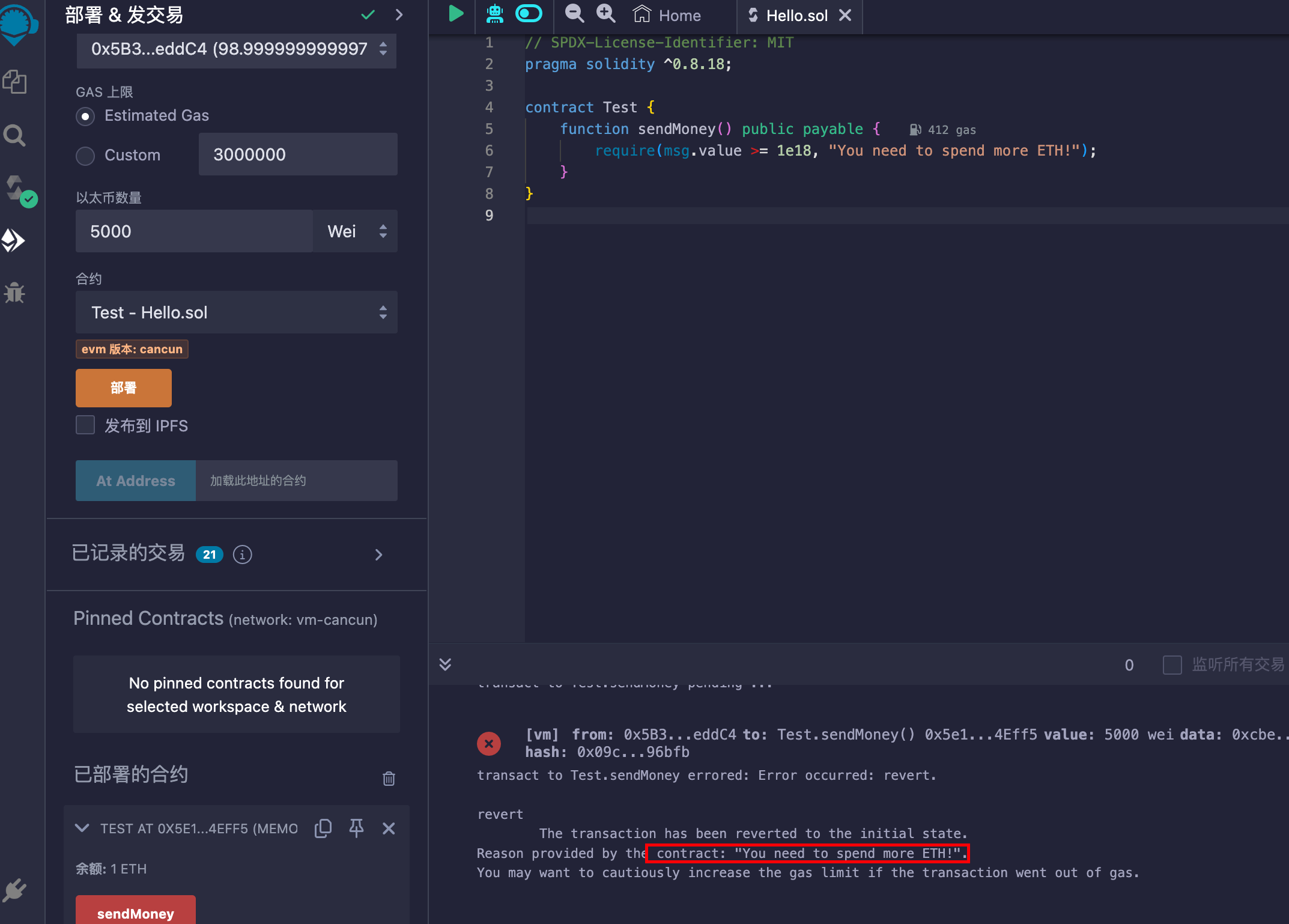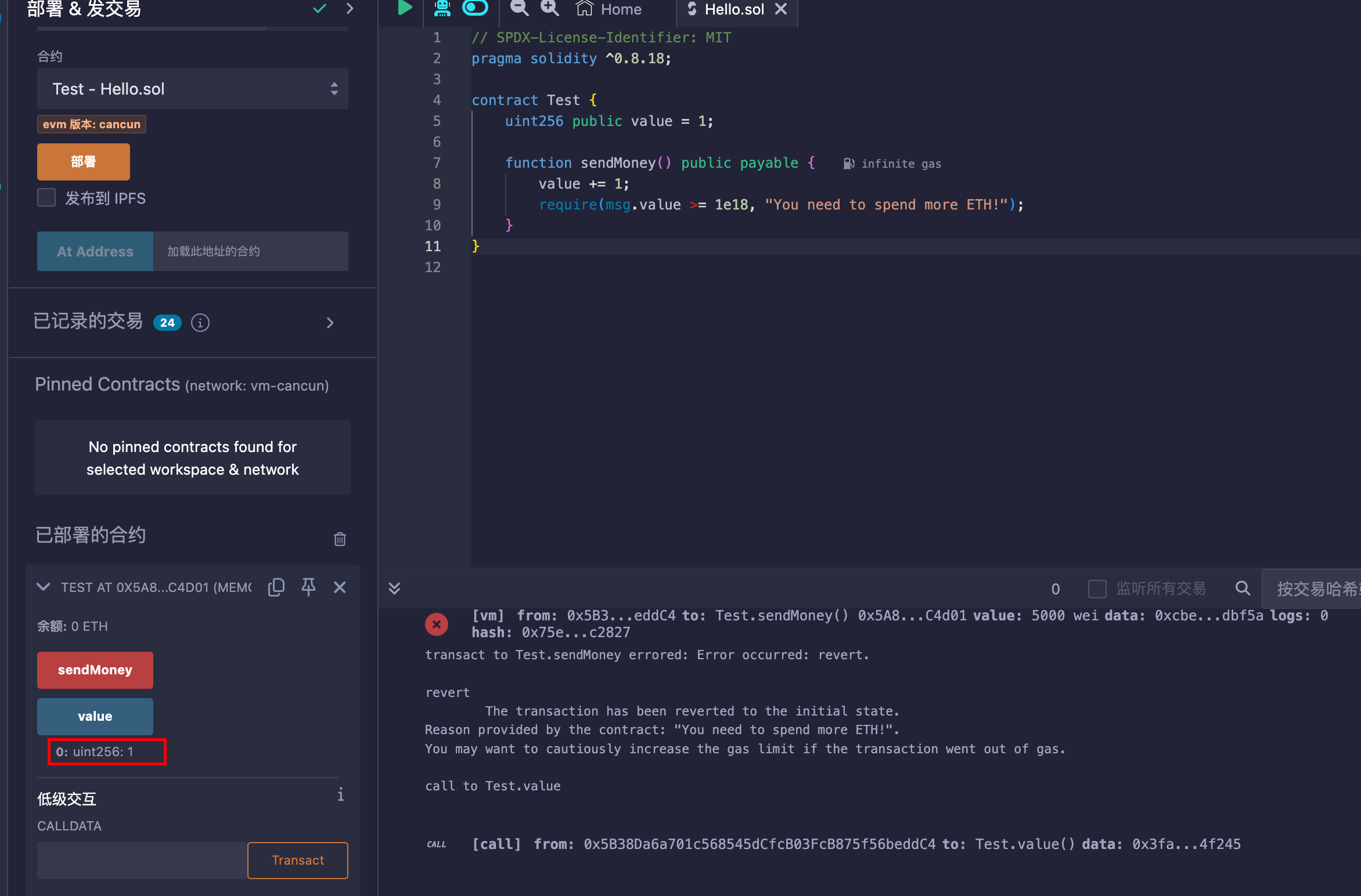Solidity学习笔记:require、revert和函数修饰符
2024/06/04
require
// SPDX-License-Identifier: MITpragma solidity ^0.8.18;
contract Test {
uint256 public constant MINIMUM_USD = 5 * 10 ** 18; function sendMoney() public payable { require(msg.value >= 1e18); }}msg.value表示交易的金额,单位是Wei,Wei在以太坊中是最小的单位,1Eth = 1000000000000000000 Wei。
require表示至少需要1个以太币。
还可以添加错误消息:
require(msg.value >= 5 * 10e18, "You need to spend more ETH!");

revert
当require的条件没有被满足时,solidity会进行revert撤消之前的操作,举例来说:
// SPDX-License-Identifier: MITpragma solidity ^0.8.18;
contract Test { uint256 public value = 1;
function sendMoney() public payable { value += 1; require(msg.value >= 1e18, "You need to spend more ETH!"); }}执行sendMoney函数时,value会加1变成2,发送的金额不足一个以太币时,revert操作会恢复value为初始值1

函数修饰符 Function Modifier
要想调用下面合约中的withdraw方法必须是合约的拥有者
// SPDX-License-Identifier: MITpragma solidity ^0.8.19;
contract Simple { uint256 public amount; address public owner;
constructor() { owner = msg.sender; }
function withdraw() public { require(msg.sender == owner, "must be owner"); amount += 1; }}如果我们其他的一些方法也必须是合约的拥有者才能调用,如何实现呢?可以每个方法都加上一个require条件,也可以使用修饰符:
// 定义修饰符modifier onlyOwner { require(msg.sender == owner, "Sender is not owner"); _;}修饰符中的下划线表示函数的其余代码将执行的位置(对于这个例子来说就是amount += 1的执行位置)。将其放在 require 语句之后,当满足 require 条件时,函数的逻辑才会运行。
修改后的withdraw如下:
function withdraw(uint amount) public onlyOwner { amount += 1;}当调用 withdraw 时,智能合约会先检查 onlyOwner 修饰符。如果修饰符中的 require 语句通过,则执行函数代码的其余部分。